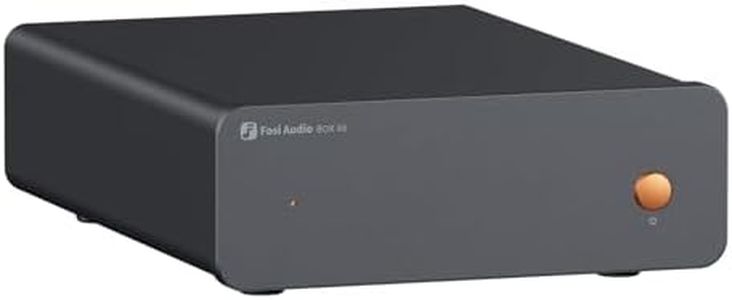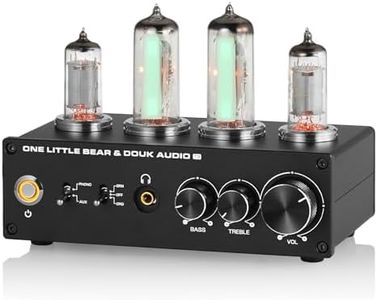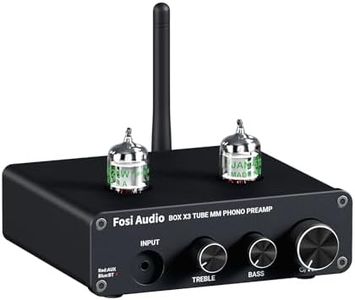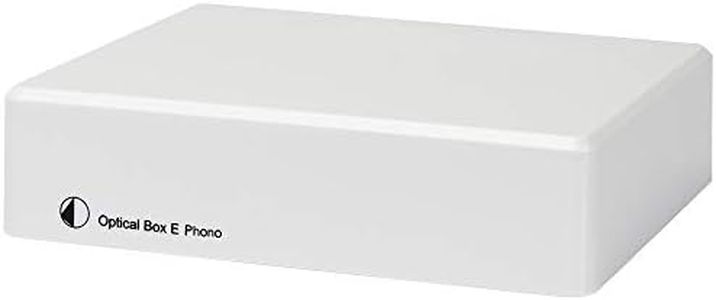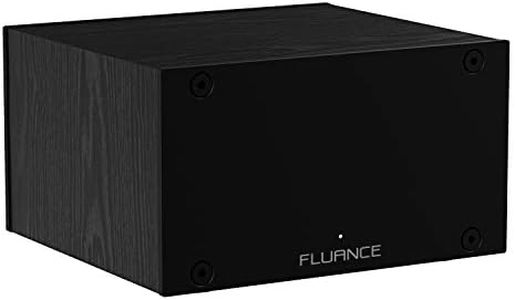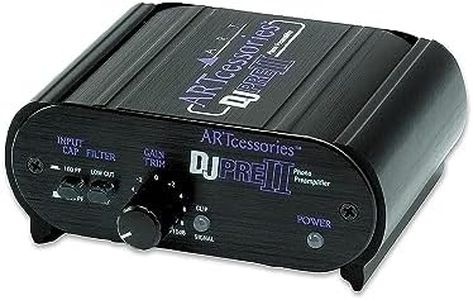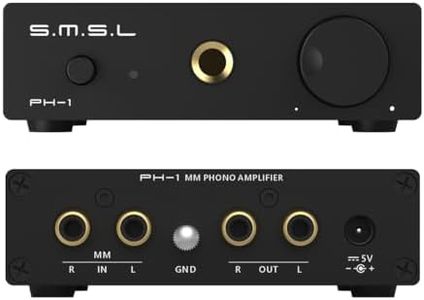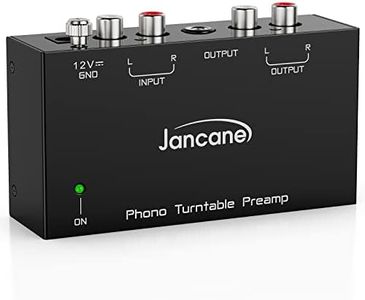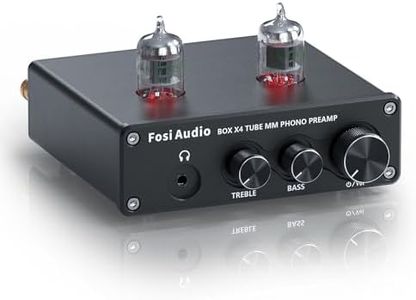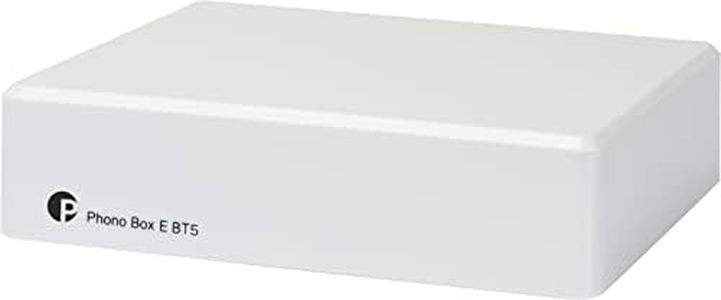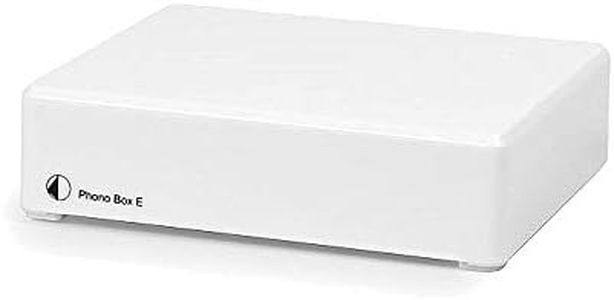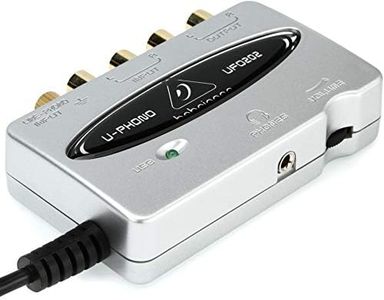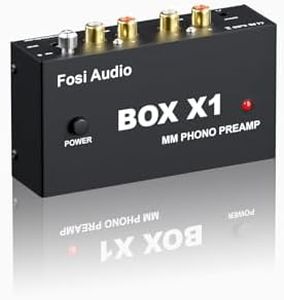We Use CookiesWe use cookies to enhance the security, performance,
functionality and for analytical and promotional activities. By continuing to browse this site you
are agreeing to our privacy policy
10 Best Phono Preamp
From leading brands and best sellers available on the web.Buying Guide for the Best Phono Preamp
Choosing a phono preamp (also known as a phono stage) is an essential step if you're looking to listen to vinyl records with the best possible sound quality. This device amplifies the weak signal from your turntable to a level your speakers or amplifier can handle, and also applies special equalization needed for records. The right preamp can make a big difference in your listening experience, so understanding the key features will help you find one that's well-matched to your equipment and your listening needs.GainGain refers to how much the preamp boosts the signal from your turntable. This is important because the signal from a record player is very faint compared to other audio sources. For moving magnet (MM) cartridges, you typically need less gain, while moving coil (MC) cartridges require greater gain because they produce an even quieter signal. Most phono preamps are set up for MM, but some offer switchable gain or are dedicated to MC. If you already have a turntable, check what type of cartridge it uses and choose gain accordingly: lower gain (around 35-45 dB) suits MM, while higher gain (50-65 dB or more) is needed for MC. Picking the right gain helps ensure your music sounds full but not distorted.
Cartridge Compatibility (MM/MC)Phono cartridges come mainly in two types: moving magnet (MM) and moving coil (MC). MM cartridges are the most common and work with most entry-level or integrated phono preamps, while MC cartridges are often used in higher-end setups and need special support. When picking a phono preamp, make sure it matches your cartridge type. Some preamps offer a switch or setting for each type, while others are only compatible with one. If you think you may upgrade your cartridge in the future, look for a preamp with both options for greater flexibility.
Input Impedance and CapacitanceImpedance and capacitance settings allow you to fine-tune how the preamp works with your specific cartridge, impacting the tonal quality of your sound. MM and MC cartridges each have their own ideal impedance and capacitance ranges, and matching them correctly can improve clarity and reduce unwanted noise. Simple phono preamps may have fixed settings, but more advanced ones let you adjust these values. If you're not sure what your cartridge needs, start with factory recommendations or look for a preamp with adjustable settings for future tweaking.
RIAA EqualizationRIAA equalization is a standard curve that must be applied to all vinyl recordings to correct their frequency response. All phono preamps should offer this automatically, as it's essential for vinyl playback. While most modern preamps do include accurate RIAA equalization, it's good to be aware of, especially if you're looking at very old or unusual models. For most users, just ensure RIAA equalization is present and correctly implemented.
Build Quality and ShieldingA phono preamp deals with very small audio signals, making it especially sensitive to interference, noise, and hum from its environment. Build quality—including the casing and internal components—affects how well the preamp resists this unwanted noise. Look for solid construction and, if possible, a metal enclosure, which can protect against electronic interference. Good build quality helps deliver a cleaner, clearer musical signal.
Output OptionsOutput options describe how the preamp connects to the rest of your audio setup. Most phono preamps have standard analog outputs (RCA jacks) that feed into your amplifier or speakers. Some models may also offer digital outputs like USB for connecting directly to a computer for recording. Choose the output that matches your setup and needs—analog for traditional hi-fi systems, digital if you also want to digitize your records.
